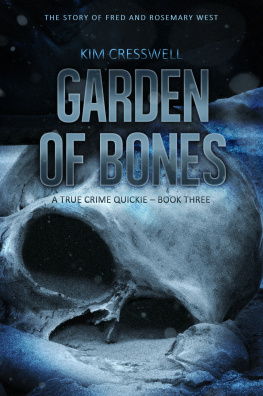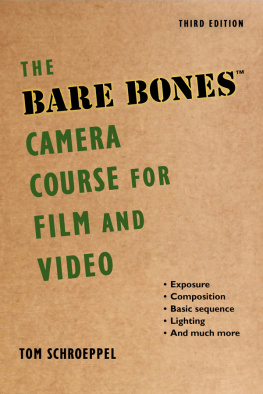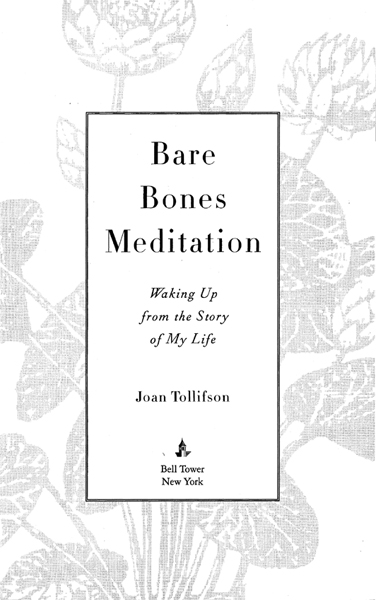A wonderful piece of writing and meditation teaching. Joan Tollifson moves decisively from self-preoccupation to self-knowing. She takes us with her, in writing that is simple, straightforward, and honestat times excruciatingly so. The tenacity of certain stubborn forms of conditioning is treated brilliantly. All who practice awareness must sooner or later face and see through such habit-energy.
This book also provides us with a rare and invaluable record of the teaching of Joans remarkable teacher, Toni Packer. Joan shows us how she learns and tests these guidelines in the fire of her own life. It documents one persons courageous commitment to self discoveryto come-what-may seeing. I was very moved.
I recommend this book to Zen, Vipassana, and nontraditional practitioners of mindfulness meditation. When the book ends, Joan Tollifson is in a strong and hard-earned position to take herself and all of us even deeper into the world of mind. She has the rest of her life to do that.
LARRY ROSENBERG , Guiding Teacher,
Cambridge Insight Meditation Center and
Insight Meditation Society
Prologue

Meditation has no repetition at all
it is moment to moment.
V IMALA T HAKAR
This book is about meditation in the context of an actual life. It is based on journals I kept while living and working at Spring water Center, a nontraditional meditation retreat center in rural New York, founded by Toni Packer, an unusually clear-sighted woman who is now almost seventy years old. Toni does not call herself a teacher because she sees conceptual imagery like teacher and student as obscuring the truth.
As I see it, meditation is not merely a quest for personal peace of mind or self-improvement. It involves an exploration of the roots of our present global suffering and the discovery of an alternative way of living. Meditation is seeing the nature of thought, how thought constantly creates images about ourselves and others, how we impose a conceptual grid on reality and then mistake the map for the territory itself. Most of the time we arent even aware that thought is taking place. Meditation is realizing, on ever more subtle levels, that it is. When conceptualization is seen for the imaginary abstraction that it is, something changes.
Meditation is listening. Listening to everything. To the world, to nature, to the body, the mind, the heart, the rain, the traffic, the wind, the thoughts, the silence before sound. It is about questioning our frantic efforts to do something and become somebody, and allowing ourselves to simply be. It is a process of opening and quieting down, of coming upon an immediacy of being that cannot be known or captured by thought, and in which there is no sense of separation or limitation. Meditation is moment-to-moment presence that excludes nothing and sticks to nothing.
The meditation approach that this book describes is not dependent upon a method or a program. It questions any attempt by the mind to construct such a program or goal. It relies on no techniques, special practices, costumes, or body positions. It is utterly simple and available to everyone at every moment. It is that which we are, when all that we think we are is not in the way.
Meditation is a powerful antidote to our purposeful, growth-oriented, war-mongering, speed-driven, ever-productive consumer civilization, which is rapidly devouring the earth. We retreat in meditation work not from reality, but from our habitual escapes from reality. Meditation is a social and political act. Listening and not-doing are actions far more powerful than most of us have yet begun to realize. But meditation is much more (and much less) than all of this. Meditation is not knowing what meditation is.

This book is essentially a true story, although of course there is no such thing, but it is not intended to be an objective or historical account of Springwater or any other meditation center. It is my story, no one elses. I have made minor changes in chronology, characters, and factual details in a number of instances in order to enhance readability or protect privacy. In many places I have rolled a number of real people into a single composite character for those same reasons, and thus parts of the story have been lightly fictionalized. In particular, the staff at Springwater Center and the residents of Berkeley Zen Center who appear in this book are all composites, loosely based on real people. Names have been changed, except those of public figures, including my teachers (and Tonis husband, Kyle). No character in this book represents any actual person, and the picture I paint of my various meditation teachers is my picture only.
The book was written over an eight-year period, between 1988 and 1995, during which time I was living either in California or in Springwater, New York. It is a kind of spiritual autobiography intended to reveal not some distilled and final truth, but rather the actual messy process of spiritual exploration as it unfolds in the real life of one person, one person who is perhaps not so different from everyone else.
I offer it in that spirit.
J OAN T OLLIFSON
Springwater, New York
September 1995
Acknowledgments

First and foremost, I thank my parents, Dorothy and Wallace, for their wonderful support and encouragement over the years. I extend my deepest gratitude to my teachersToni Packer, Charlotte Joko Beck, and Sojun Mel Weitsmanto Toni for her remarkable simplicity and spaciousness; to Joko for her skill in working with emotion/thought, and her indefatigable relish for meeting disappointment and having no hope; to Mel for his wisdom and love; to all three for their integrity, kindness, and steadfast abidance in the ordinary. Thank you from the bottom of my heart to Tanis Walters, Susan Moon, and Lenore Friedman for their faith in this book, their generous encouragement and support of my writing, their astute criticism and invaluable friendship. I am forever grateful to Toinette Lippe at Bell Tower for believing in this book; for her extraordinary care, effort, and skill as an editor; for being such a delightful person to know and work with. I am thankful to all the people of Springwater Center, and those who work with Toni in California. Especially I thank the Springwater staff for all weve lived and worked through together. Many people read the manuscript, or parts of it, and offered useful feedback and encouragement; I am particularly grateful to Michael Rubin, Thaisa Frank, Forest, Maylie Scott, Barbara Gates, Judith Less, Loie Rosenkrantz, Randolph Pope, Chude Allen, Kevin Frank, Nomi and John Stadler, Susan McCallum, Arida Emrys, Judy Smith, Charlotte Painter, Barbara Selfridge, Freida Gordon Dilloo, Melody Ermachild Chavis, Cate Gable, Pat Wells, Blanche Hartman, Connie Batten, and Bernis Berens. For friendship, humor, and hospitality, heartfelt thanks to Paula Kimbro. Thank you to Marcia Kelly, Jean Scannell, Josette Mondanaro, Elizabeth Katz, Lin Davis, Deborah Beadle, Joe Rosenstiel, Evelyn J. Kitson, Isha Mayim, Ellen Mack, Mickey Duxbury, Carole Sierpien, Margie Hughes, and Keith Barton; to the Zen centers in California where I have practiced; to the Vedanta Society of Northern California for their retreat in Olema; to Reb Anderson, Maurine Stuart, Jean Klein, Gangaji; and to the many other friends and teachers I have not named who have encouraged and helped me in so many ways. Finally, I want to express my great appreciation for the work of Shunryu Suzuki Roshi and Sri Nisargadatta Maharaj.











